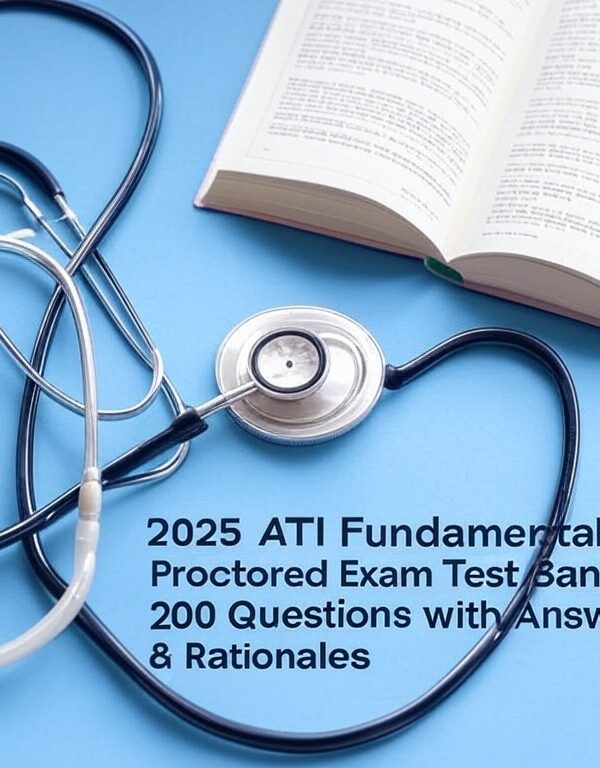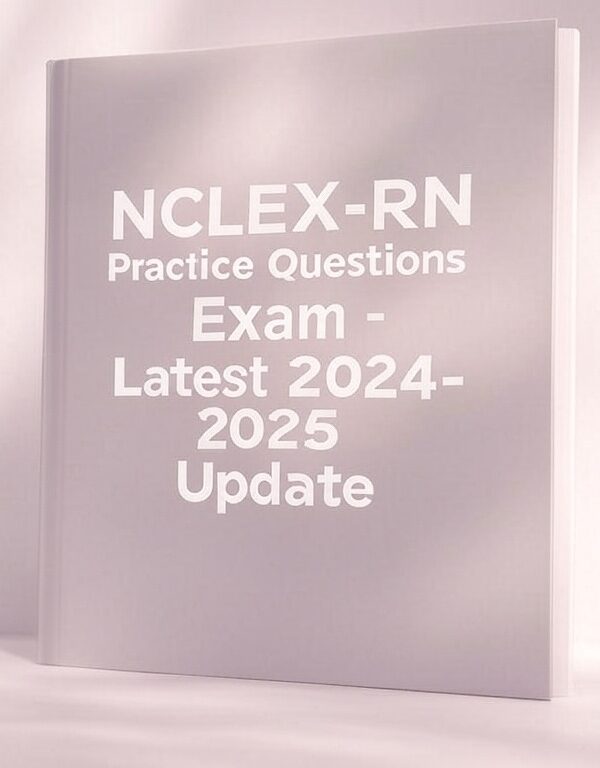-
100 high-yield quiz questions with detailed rationales
-
Covers essential critical care topics for the HESI Exit Exam
-
Includes strategies to tackle challenging questions effectively
-
Updated 2025 content aligned with HESI exam standards
-
Features case-based scenarios for practical understanding
-
Expert insights to boost confidence and performance
-
Ideal for nursing students preparing for the HESI Exit Exam
Preview
Which steps would the nurse take for managing an adolescent who sustained drug
poisoning? Select all that apply.
A. Induce gastric lavage.
B. Give ipecac syrup to the client.
C. Turn the head of the client to the side.
D. Empty the mouth to clean the residue of the drug.
E. Call local poison control center before any intervention. – – correct ans- -C. Turn the
head of the client to the side.
D. Empty the mouth to clean the residue of the drug.
E. Call local poison control center before any intervention.
The nurse would turn the head of the client to the side to avoid aspiration. The nurse
would empty the mouth if there is any remaining drug. If the victim is conscious and
alert, the nurse would call the local poison control center or the national toll-free
poison control center number before attempting any intervention. The nurse would
refrain from inducing vomiting in the client because there is a risk of aspiration. Ipecac
syrup causes vomiting, so it is no longer recommended for routine treatment of
poisoning.
Which action of the emergency department nurse caring for a group of clients injured in
a community disaster would need correction?
A. Triaging the victims
B. Supervising volunteers
C. Providing on-site first aid
D. Removing people from danger – – correct ans- -D. Removing people from danger
During a community disaster, removing people from danger is done by firefighters and
other disaster trained emergency personnel. Nurses would not be involved in this
process. After the removal of people from danger, the nurses triage the victims under
triage categories. The nurses supervise volunteers and provide on-site first aid to
victims.
A client’s cardiac monitor indicates ventricular tachycardia. The nurse assesses the
client and identifies an increase in apical pulse rate from 100 to 150 beats/minute.
Which action is indicated?
A. Administer amiodarone.
B. Administer epinephrine.
C. Assist with insertion of a pacemaker.
D. Administer atropine. – – correct ans- -A. Administer amiodarone.
Amiodarone suppresses ventricular activity; therefore it is used for treatment of
premature ventricular complexes (PVCs) and ventricular tachycardia. It works directly
on the heart tissue and slows the nerve impulses in the heart. Epinephrine
hydrochloride is not used for ventricular tachycardia (VT) with a pulse and may even
precipitate ventricular fibrillation. A pacemaker is used for symptomatic bradycardia
and heart blocks. Atropine is used to treat bradycardia.
When a client’s cardiac rhythm strips shows more P waves than QRS complexes and
there is no relationship between the atria and the ventricles, how would the nurse
document the rhythm?
A. First degree atrioventricular (AV) block
B. Second degree AV block Mobitz I (Wenckebach)
C. Second degree AV block Mobitz II
D. Third degree AV block (complete heart block) – – correct ans- -D. Third degree AV
block (complete heart block)
Third-degree block often is called “complete heart block” because no atrial impulses
are conducted through the AV node to the ventricles. In complete heart block, the atria
and ventricles beat independently of each other because the AV node is completely
blocked to the sinus impulse and is not conducted to the ventricles. One hallmark of
third- degree heart block is that the P waves have no association with the QRS
complexes and appear throughout the QRS waveform. In first-degree AV block, a P wave
precedes every QRS complex, and every P wave is followed by a QRS, but the PR interval
is prolonged beyond 0.2 seconds. Second-degree AV block type I, also called Mobitz I or
Wenckebach heart block, is represented on the electrocardiogram (ECG) as a
progressive lengthening of the PR interval until there is a P wave without a QRS complex.
Second-degree AV block type II (Mobitz II) is a more critical type of heart block that
requires early recognition and intervention. There is no progressive lengthening of the
PR interval, which remains the same throughout with the exception. However, some P
waves are not followed by a QRS.












Reviews
There are no reviews yet.